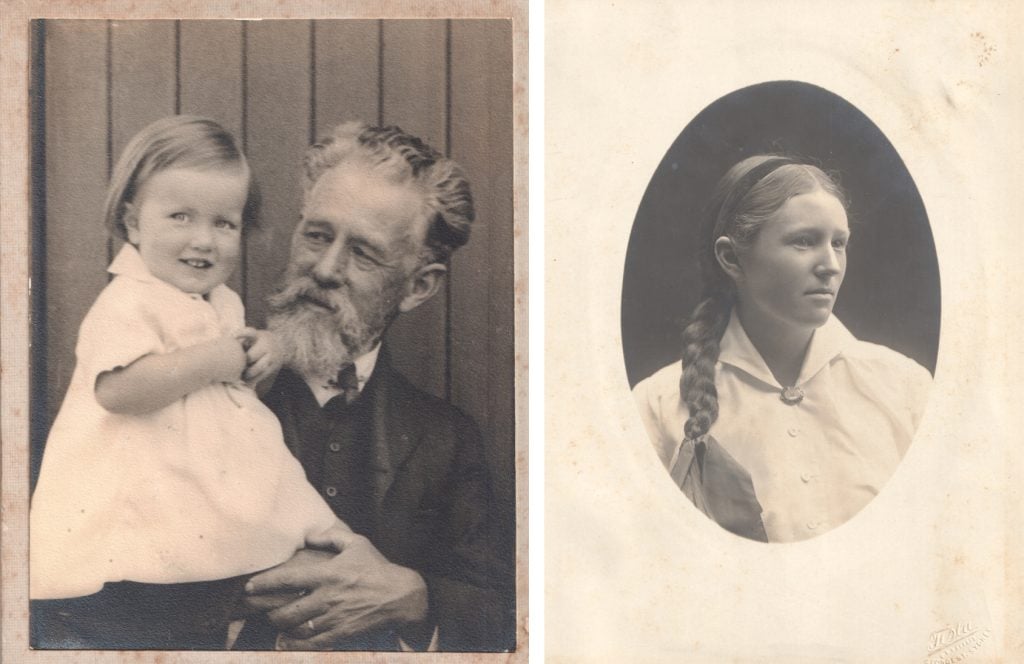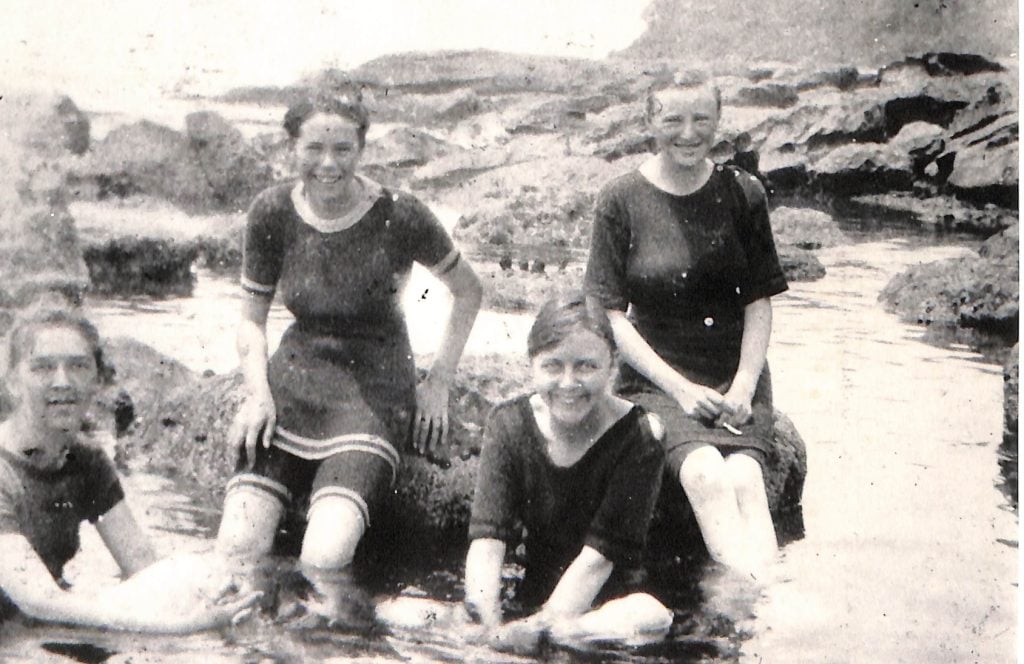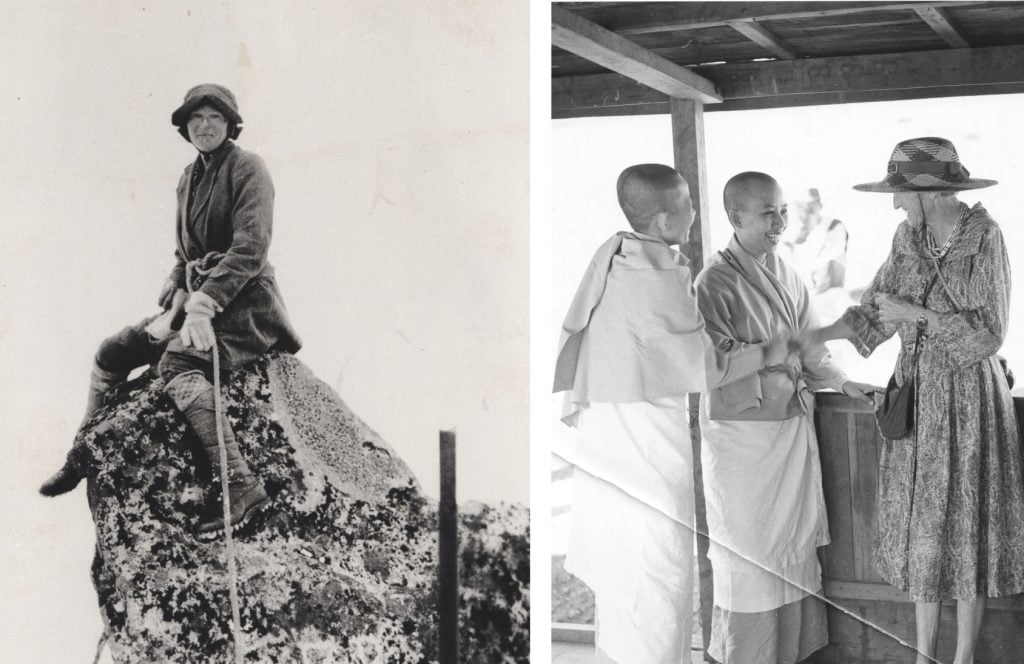Featuring never-before-seen images and documents from the National Trust Archives, Marie Byles – Many Lives in One, charts the remarkable life of the trailblazing solicitor, conservationist and adventurer. President of the Women Lawyers Association of NSW (WLANSW), Allysha-Jane Merrett, opened the exhibition at the National Trust Centre with an inspiring talk on the life and legacy of Marie Byles which is shared below.
I would like to start by acknowledging the traditional custodians of the lands on which we meet, the Gadigal people of the Eora nation, and pay my respects to elders past and present.
My name is Allysha-Jane Merrett, and I am the President of WLANSW; and a barrister at 8 Wentworth Chambers.
Tonight, I will speak to you about Marie Byles, give you a snapshot of her extraordinary life, her legacy and the experience of women in the legal profession today.

It was the year 1900, the bubonic plague strikes, women’s suffrage is gaining traction, the Commonwealth of Australia is not far off being established and Marie Byles was born. She was, as the photos, around the room [at the National Trust Centre] reflect, a woman of adventure, strength and curiosity. When Marie comes to mind – so too do these terms; pioneer, feminist, first woman solicitor, explorer and lone female traveller, environmentalist, and a Buddhist.
Marie’s mother was a suffragette and artist, who encouraged her to be economically independent and to pursue her education, while her father was a Fabian socialist railway engineer who delivered criticism of private property, encouraging his children from a young age to chant ‘Down with the blasted landowners!’[1] From an early age Marie was leading progress, the image called ‘Bathing’ is of Marie as part of the Pirate Girls. At age eight she was excited to hear the Boy Scouts movement was coming to Australia, obtaining the Scouts rulebook and avidly devouring it, only to discover that they would not admit girls. So, Marie founded the Pirate Girls, barefoot and with a skull and crossbones flag, they rowed across Pittwater, camping and exploring the bush.[2]

Ada Evans was the first woman in NSW who graduated with a law degree in 1902 but was unable to practice because there was no legislation allowing it. The Women’s Legal Status Act 1918 (NSW) was eventually passed, permitting women to become qualified barristers and solicitors and to practice in the Courts, it also gave women the right to be elected to the legislative assembly.[3] In that same year, Marie commenced her study at the University of Sydney. Marie would have been the only woman in her classes most of the time. When women married, if they were employed, they were required to quit their jobs, as it was illegal for a married woman to continue working. Feminists saw marriage as a ‘house of bondage’ with married women denied the right to own property or work. Intellectually energetic women wanting to apply their talents and abilities were often faced with a choice: career or marriage. To contemporary minds, the discrimination women were subjected to before legislative change is unimaginable.
Marie graduated from an arts degree in 1921, and a law degree in 1924 but had trouble getting a job until the Dean of Law at Sydney University, Sir John Peden, persuaded Henry Davis & Co to give her an opportunity. Marie had to pay twice the usual £100 pound premium to her master solicitor during her training and the articles of her clerkship stated that her father should ‘provide all manner of necessary and becoming apparel’. This practice of paying a premium effectively meant that you needed to come from a family with some substantial financial resources. Another gate to keep diversity out.
‘Someone had to be the first female solicitor in NSW and I think it could only have been a woman with such force and strength and indifference to societal expectations as Marie.’
Marie became managing clerk at Henry Davis & Co and stayed with the firm until 1927. She reported that she learnt little while working as an article clerk; filing documents and running unedifying errands. She then travelled for two years on a Norwegian cargo boat, before returning to Sydney in 1929 and establishing her own practice at Eastwood using 40 pounds her mother gave her to make a start. Another brave choice of Marie – to start a business during the great depression. The work came slowly and consisted of conveyancing, probate and divorce settlements for women. Divorce was a nasty business then, with spouses having to prove fault – you couldn’t just fall out of love. Women were often completely financially dependent on men and the legal system often failed to ensure relief for women whose ex-husbands defaulted on maintenance payments.
By the 1930s there were five other women along with Marie Byles practising as solicitors. Little encouragement was given to women in the 1930s who were attempting to establish a practice in the law. It must have been so challenging to succeed in a profession where you were not welcome. Through her legal studies and experience Marie had insight into the reality of women’s lives. Men, who were often indifferent to the hardships of women when forced to support themselves and their children, made the law, interpreted the law and supervised the legal process.
Marie wrote for the Australian Woman’s Mirror (1927-36), advising women on their legal rights. In one column, titled ‘Who owns the housekeeping allowance?’ she counselled women to ‘spend all you can’ as there was no reward for frugality when it came to money that was deemed by the law as held in trust for their husbands.[4]

Marie became the first female master solicitor when Margaret Crawley was articled to her after the war. Marie gave many other women their first steps in the legal profession and preferred to employ married women. She offered permanent part-time work well ahead of her time, along with compulsory morning tea breaks. Alongside the law, Marie was a keen conservationist and pushed for the preservation of what has become the Bouddi National Park, Marie was a keen mountaineer, leading an expedition to Mt Sansato in western China; and was a founding member of the Buddhist Society of NSW.
Notwithstanding these pursuits Marie described her legal practice as her ‘foremost love’. She records; ‘I was given a good but not a brilliant brain…I often look back on all the audacious things I have done and wonder how an earth I did them and why, for I have no outstanding talents and all is transient – a laugh or a sob in the mist of time.’[5]
In 1966 tragedy struck Marie when she was savagely assaulted in her home, no one was ever charged – the assailant fractured her skull, caused significant injuries and left her locked in a cupboard, she never recovered and never returned to practice.
Marie passed away in 1979 after living an inspiring life that continues to stir wonder and awe in many.
So where are we now as women in the law?
When I go to Court, I often have a female instructing solicitor, sometimes a female judge and on occasion, a female opponent.[6] We have come so far in 100 years since Marie Byles was first admitted.
Stories from the 1930s and 1940s and later include women not being able to find a room in chambers, being told to ‘robe’ in the toilets, not getting any work – as most of the solicitors were men and if they were women solicitors then they likely weren’t in a position to provide briefs to barristers of their choosing.
I personally have never been discriminated against because of my gender – or maybe I was too aloof to realise – and I can’t recall a time where I was criticised for my gender or my competence questioned because I was a woman. This was not Marie’s experience – a woman conducting legal work in a man’s world, would have been extraordinary!
In fact, it was such a novelty that the Sydney Morning Herald wrote about Marie’s admission on 4 June 1924.
We owe a great degree of gratitude to Marie and for those who walked before us. It is because of those pioneering women, including Sybil Morrison, Elizabeth Evatt, her excellency Margaret Beazley, Janet Coombs to name a few, that we can stand taller, achieve things more easily – someone had to be the first female solicitor in NSW and I think it could only have been a woman with such force and strength and indifference to societal expectations as Marie.
Today we have women’s organisations including WLANSW, which was incorporated in 1952, and the Women Barristers Forum to mention a few. These organisations that provide support and advocate for the advancement of women – were not around when Marie was paving the way.
It is not to say that we can rest now, there is always progress to be made because we want our society to be the best that it can be, in terms of social wealth and striving to reduce our environmental footprint and preserve the precious nature that Marie loved so much.

When preparing to speak to you tonight, I had access to several resources including a paper of Chris Ronalds SC that she presented here to the National Trust on Marie Byles in 2005.
That paper had some interesting statistics (2005)
- Women students represented 60% of law students;
- Number of women solicitors was growing but the glass ceiling remained;
- Women at the bar 15%; 2051 in total, 312 women, 4% silks; 308 total – 13 women
- Sprinkling of female judges but none on the High Court at 2005;
- Chief Justice Gleeson
- Justice McHugh
- Justice Gummow
- Justice Kirby
- Justice Hayne
- Justice Callinan
- Justice Heydon
Now, 20 years later;
- Women law students sit around high 50%/60%
- Women solicitors are now representing approximately 56% of the NSW;[7] advancement into senior positions and diversity in the profession remains a goal, along with gender pay parity;
- Women at the bar 27.11%; 2460 in total, 667 women, 15.71% silks; 382 total – 60 women; 332 men.[8]
- Women on the High Court now number three in 2025;
- Justice Gleeson
- Justice Jagot
- Justice Gordon AC
Graduates will no doubt enter the legal profession with a mix of excitement, fear and trepidation, as they sit down to their first client meeting, hand a client their first box of tissues, walk into a Court room for the first time and realise that it is your turn to speak.
I would say this to law graduates, imagine doing all of those things for the first time with little to no support, in fact probably faced with contempt.
Imagine what it would have been like in 1924 to be the first woman in NSW practising law, and think how far we have come and where can we go now?

Discover the exhibition
Marie Byles – Many Lives in One is currently on display at the National Trust Centre. Entry to the exhibition is free and open to the public during business hours Monday to Friday. Some exclusion times and dates apply. Please call the National Trust Centre reception in advance of your visit to confirm opening times.
Footnotes:
[1] Byles, M. B. 1944, ‘Bushwalking Babies,’ Sydney Bush Walker, September, 2-3 in Footprints, Imprints: Seeing Environmentalist and Buddhist Marie Byles as an Eastern Australian
Allison Jane Cadzow, University of Technology, Sydney Journal of Multidisciplinary International Studies Vol. 4, no. 1 January 2007
[2] National Trust Archives
[3] Anne McLeod ‘The Summit of Her Ambition: the spirited life of Marie Byles’ (2016)
[4] https://first100years.com.au/marie-byles/
[5] Sourced from Chris Ronalds SC paper on Marie Byles Reflection on her life as a legal practitioner 13 September 2005
[6] This is my experience in the area of family law. It is not indicative of personal injury, commercial law and other areas
[7] National Profile of Solicitors, The Law Society of New South Wales (2024)
[8] Current New South Wales Bar Association statistics

 Facebook
Facebook Linkedin
Linkedin Email
Email